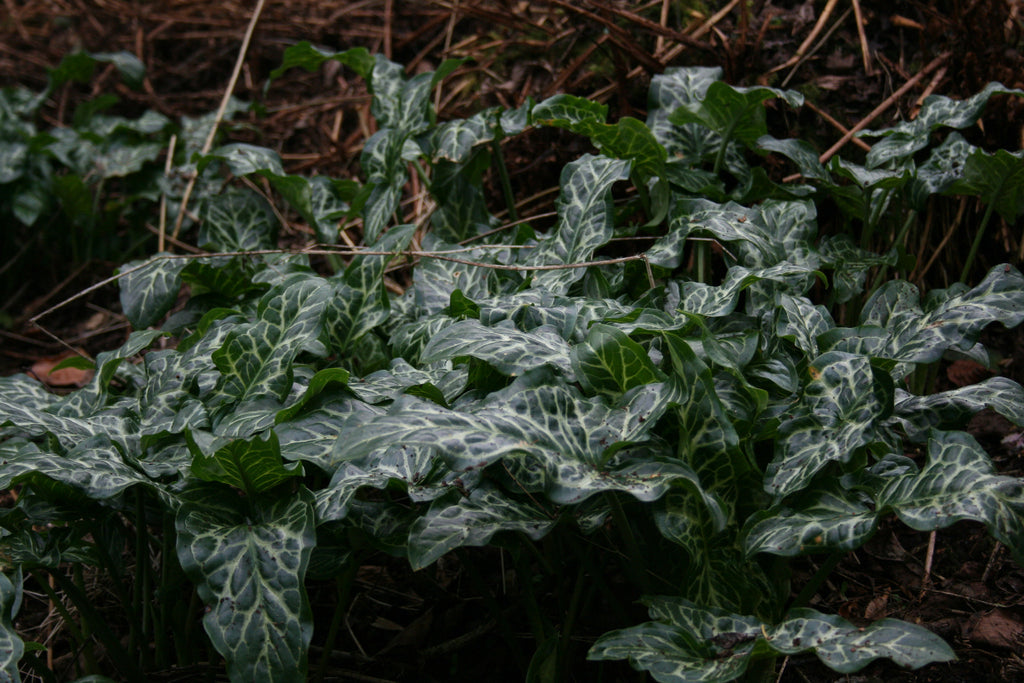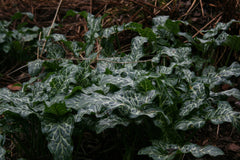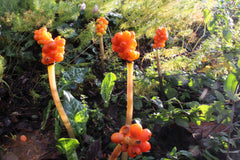



About this cultivar:
Arum italicum subsp. italicum 'Marmoratum' (now considered synonymous with 'Pictum') is a cultivar very similar to the species Arum italicum but with sharpish yellow, instead of creamy yellow, flowers. But what make this cultivar most distinct is its heavily patterned, almost variegated, foliage. Flowers bloom in spring. Each flower consists of an erect, finger-like spike covered with yellow flowers and a large, sheath-like, light yellowish-green spathe which subtends and partially envelops the flower spike like a hood. After bloom, the leaves and spathe die back leaving only the thick spike which develops attractive, bright, orange-red berries in summer. New leaves emerge in autumn and remain evergreen.
What more could you want? A Royal Horticultural Society Award of Garden Merit? Well it has that too!
- Position: Full sun, partial shade (better in partial shade)
- Soil: Almost any soil - grows well in Ballyrobert!
-
Flowers: May, June, July
- Other features: Royal Horticultural Society Award of Garden Merit (RHS AGM)
- Hardiness: Fully hardy - grows well in Ballyrobert!
- Habit: Columnar or Upright
- Foliage: Semi evergreen
- Height: 15 - 45 cm (0.5 - 01.5 ft)
- Spread: 7 - 22 cm (0.25 - 0.75 ft)
- Time to full growth: 2 to 5 years
- Plant type: Herbaceous Perennial
- Colour: White, green, red
-
Goes well with: Hosta, Hemerocallis, Iris and other plants which will compliment their dormant period in the summer
About this genus:
Arum is a genus often called the Arum lily, although botanically Arum is not related to a real lily (genus Lilium) at all. Mostly native to Europe they are relatives of the Asian cobra lily or jack-in-the-pulpit (Arisaema) and are quite easy to grow in a wide range of soils and moisture levels (although part sun and well-drained soils are best).
Arum are dormant in the summer and start to grow in the late autumn. They are usually grown for their beautiful foliage which looks best in winter but they also produce a wide variety of large, colourful flowers which are followed by red berries in late spring.
Good garden pairings are Hosta, Hemerocallis, Iris and other plants which will compliment their dormant period in the summer.

